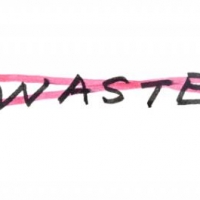Building an Effective Lean Testing Strategy

Organizations are constantly under pressure to streamline their operations and ensure that they are using their assets as effectively as possible. However, this is often easier said than done. For example, if a new vulnerability comes up in an app, more time may be spent fixing the issue than normal due to additional steps required to ensure that the software runs as expected.
To reduce wasted resources, businesses have adopted lean practices that consider the expenditure of assets to be wasteful if they're used for anything other than creating value for the end customer.
Here are a few strategies quality assurance professionals should concentrate on to implement an effective lean testing strategy.
Define waste
In an agile development environment, collaboration across stakeholders is a major priority—meaning they will all have ideas to contribute from their own perspectives. When it comes to defining waste in a lean strategy, customers and employees should come together to decide what is considered waste in product and process.
This will include eliminating a number of traditional activities such as process verification steps, creating status reports, and departmental staff meetings. But in turn, workers will be able to spend time on tasks that are valuable to them and to the end product.
Refocus on testing
Testing as a whole won't drastically change in the lean strategy, but QA teams will need to adjust how they think of these activities. Emphasis must be placed on what's slowing the team down and how it can be eliminated, especially if the same defects occur repeatedly.
In this case, automation integration may be useful to ensure that these repeated problems are handled without the need of manual execution, giving QA time back to pursue other critical tasks.
Analyze data and make changes
Any lean strategy should seek to leverage data gleaned from historical development practices, as it will provide significant insight into what areas are the sources of delays, waste, and poor quality. Questioning why there are long waiting hours during test execution and why there are failures in the test environment, for example, can be critical to improving operations.
QA teams must also ensure that any gains made will last. By using techniques such as value stream mapping, organizations can shed some light on their processes and determine how to streamline their resource use while still improving the quality of their work.
Deliver fast and often
Schedules are getting tighter for QA teams to deploy their projects, and this fast-paced environment is further emphasized in lean testing strategies. QA should leverage tools that help the team become more self-directing and make decisions about work in real time. Test management solutions will be beneficial in these circumstances, as they allow teams to prioritize tasks, track changes, and communicate effectively.
Lean testing strategies can help QA teams effectively mitigate wasted resources and ensure that they are giving each project the attention it deserves. By considering these lean values, QA can create an effective lean testing practice for their operations.

